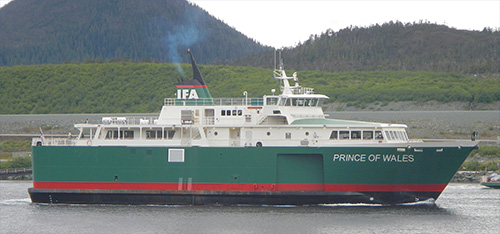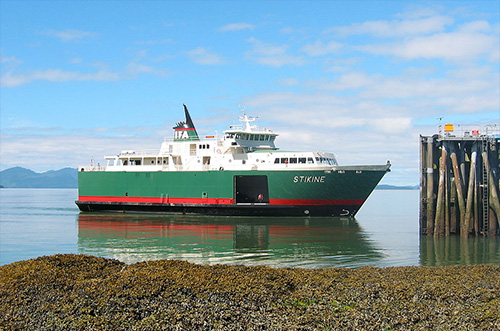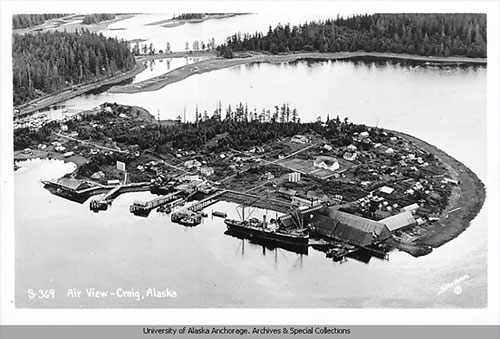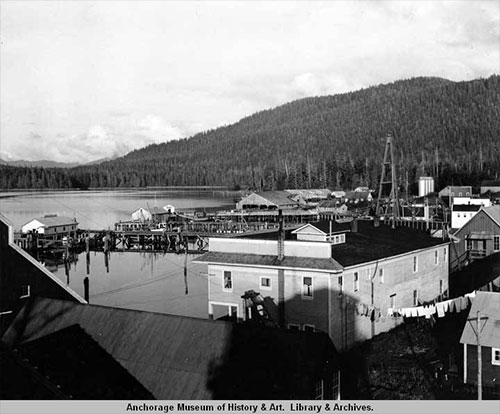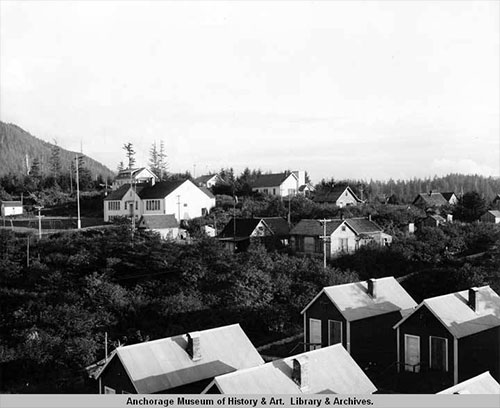Craig, IFA celebrate anniversariesBy DAVE KIFFER May 14, 2022
The IFA first began connecting POW with Ketchikan on Jan. 13, 2002. It was born out frustration over decades of less than adequate service by the Alaska Marine Highway System, according to POW residents. There was also a plan to create a new ferry route that would connect communities on Northern Prince of Wales with Wrangell and Petersburg.
Planning for the IFA began in the early 1990s. AMHS service to Prince of Wales, via the MV Aurora had been decreasing over the years, cutting back to only a couple of times a week and often either leaving or arriving at the Hollis Terminal in the early hours of the morning. POW residents wanted daily, mid-day, service. First, in 1992, the state of Alaska passed the Municipal Port Authority Act that allowed the creation of port authorities that could sell bonds to support local transportation operations. The City of Craig then received a $50,000 state grant in 1994 to study the potential of a Prince of Wales Island port authority. Ketchikan planner Kent Miller worked with C.L. Cheshire, James Van Altvorst, longtime Craig Mayor Dennis Watson and Craig City Manager Dennis Briggs to bring it to fruition. The planners came up with the idea of the separate northern and southern runs. The AMHS supported the study conclusions because it had decided that ferry service to POW was expensive and difficult to maintain. The IFA was formally created in 1997 by the communities of Klawock, Craig, Thorne Bay, Coffman Cove, Wrangell and Petersburg. In 1998, the state of Alaska endorsed the creation of the new service and the Alaska Congressional delegation secured $12.6 million for the first of the two needed day-boats, the MV Prince of Wales. The IFA received a $200,000 loan from the City of Wrangell and issued $1.9 million in bonds, that were backed by the Ketchikan Gateway Borough. The Prince of Wales was designed by the Elliot Bay Design Group in Seattle and was constructed, for $12.2 million by Dakota Creek Industries in Anacortes, Washington. She is 197.5 feet long and cruises at 15 knots. The ship can carry 160 passengers and 30 cars. She has a crew of five.
After the MV Prince of Wales went online in January of 2002, work began on MV Stikine. The Stikine was also built at Dakota in Anacortes, for $16.9 million. Originally a "twin" of the Prince of Wales, she had some modifications added to take into account things that had been noticed during the earlier ship's operation. The speed and the capacity were the same. The Stikine went online in 2006. From 2006 to 2008, the Stikine also operated a daily run on the northern route between Coffman Cove and the South Mitkof Terminal south of Petersburg, with a side trip to Wrangell. But that run proved not to be profitable and the IFA cancelled its "northern route" in 2008 and Wrangell and Petersburg eventually left the authority. Currently the Stikine and the Prince of Wales are both on the southern run. Since 2013, the IFA has provided a single round trip between Hollis and Ketchikan. A different port authority, called the Rainforest Islands Ferry Authority was proposed to provide service between POW and Wrangell and Petersburg, but it didn't come to be. The state Department of Transportation provides the IFA with a $250,000 operations subsidy each year.
On March 4, 2022, the City of Craig celebrated its 100th birthday. As part of the centennial celebration, there were numerous community events and the city even commissioned a 10 minute film celebrating the town's history. The founding of Craig dates from 1907, when Craig Millar started fish saltery on nearby Fish Egg Island with the help of Haida natives who had emigrated from Canada to the region decades before. Millar moved his operation to Prince of Wales Island and added a cold storage and packing company at what is now called Craig. In the early days, the tiny community was still sometimes referred to as "Fish Egg." In 1922, the community of approximately 200 people was incorporated as second-class city within the territory of Alaska.
Craig historian Ralph Mackie wrote in a recent Prince of Wales Island Post story that prominent local families such as the Browns, the Abels and the Cogos moved to Craig in the 1920s and created business such as J.T. Brown's, Mama Abel's Confectionary and the Cogo Hotel. In the 1930s, prominent town builders such as Tommy Thompson (Thompson House) and Tex Yates (Yates Hardware) also arrived, according to Mackie. With the booming regional fishing industry, Craig's population reached 500 in the early 1940s, but then the fishing industry collapsed and the town population settled back in around 250 for the next few decades.
But things changed in the 1980s. Timber harvest on native land owned by the Shaan Seet, Klawock Heenya and Sealaska corporations brought activity to the area and the town population jumped to more than 1,000 in 1990 and nearly 1,400 in 2000 . But then the timber industry tailed off and Craig’s population dropped – as of 2020, to slighty more than 1,000. Still easily the largest city on Prince of Wales Island. The Prince of Wales road system was also developed in the 1980s and, as a result, people could begin taking the ferry from Ketchikan to POW and then have access to communities, like Craig, that had been only accessible via boat and plane for most of the 20th Century. In 1982, Craig was rocked by murder of eight people in the seine boat Investor while it was docked in Craig. Although two trials were held, no one was ever held accountable for the murders. In 2013, Craig was hit by a 7.5 magnitude earthquake that was just 63 miles away. The community was shook, but fortunately there was little damage and no tsunami. By comparison, a tsunami from the 9.3 Great Alaska Quake of 1964, caused much more damage to the docks in Craig than anything from the 2013 quake. Today, Craig still relies on fishing and timber, but tourism is a growing part of the local economy and there are lodges and tourism operations in the area. Craig is also the main service community for Prince of Wales Island.
On the Web:
|
||||||||

